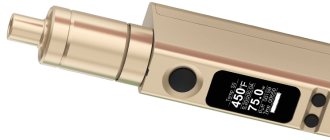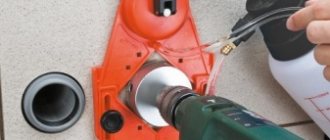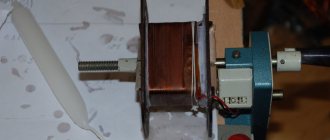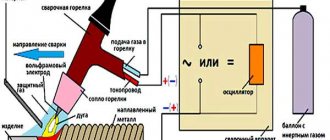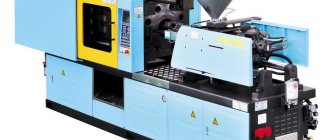Introduction
Temperature control appeared in the summer of 2015 and immediately became a hot topic. This function brought so many useful properties that it instantly became a new standard that e-cigarette manufacturers measure up to. And thanks to the development of the vaping industry, mods with temperature control immediately began to appear on the “counters”, and there was no need to wait six months for the establishment of production, as was the case with the variwatt.
Variwatt is not mentioned in vain: temperature control in an electronic cigarette is its direct successor, improving the concept of power regulation. Mods with TK allow you to adjust the power, but when the temperature is set, maintaining it is given higher priority, and if the coil gets very hot, the board gives the command to reset the power in order to cool the evaporator. For the vaper, the sensations will not change: it will seem to him that the power is still the same. When the coil begins to cool, the board increases the power and, in general, maintains the set temperature in every possible way.
How does thermal control work? The secret lies in the special material of the evaporator - nickel or titanium. These metals tend to increase resistance when heated, and do so linearly and smoothly. When installing a new evaporator, the mod board remembers what the resistance of the cold coil is, and then, based on the number of Ohms, it can determine how hot the coil is. The use of these particular metals allows electronics to determine temperature very accurately. Other materials do not have such a direct and clear interaction between heat and resistance, so their use does not make sense.
Accordingly, for the function to work, clearomizers are needed that support the ability to install titanium and nickel heads. As a rule, these are the majority of modern clears: Eleaf GS-TANK TC, Kanger Subtank.
You will also need a mod with temperature control. Here the choice is a little smaller, since the new product is not yet so widely represented in the model ranges of large companies. Examples include eVic VT, iStick 40W TC, Sigelei 150W TC, Kanger Nebox. The difference between these mods is a special board that “understands” the resistance indicators of nickel and titanium.
Temperature control allows you to adjust the temperature between 200-600°F or 100-315°C. Accordingly, the unit of measurement during adjustment becomes not Watts, but degrees. In some mods, there is a switch to Joules, which determine the heating rate of the coil. They can be set manually, or you can trust the automation, which “knows better” and will select the optimal value.
Seals.
If the fitting has a threaded part with a nut, thanks to which it can be secured in the casing body through rubber seals, then the tube of the stainless coil must somehow be passed through the plastic of the casing, and in such a way that water does not leak. For these purposes, I had to make a cunning homemade rubber seal (2 pieces) (see picture) with a groove for plastic.
Using a sharpened large-diameter tube, I cut out two cylindrical seals from thick sheet rubber (thickness about 14mm). Then, using a smaller tube (d < 10mm), central holes were made in each seal (a dashed line passes through them in the figure). Then the seals were mounted on a suitable bolt, the bolt was clamped into a drill and, using a piece of a square needle file, grooves for the plastic were machined (turned, loudly said, rather rubbed) on the rubber seals:
Important! The hole in the plastic of the plumbing pipe covers was drilled in such a way that the rubber seal was inserted into the plastic very tightly. Thus, after insertion, the central hole (which was already made with a diameter of slightly less than 10 mm) was additionally crimped. When inserting the coil tube, the rubber is sandwiched between the coil tube and the plastic hole, thereby sealing the joint. No additional sealants (silicone, etc.) were used.
Pros and cons of thermal control
The benefits of temperature control are quite impressive:
- cooler steam - by setting the temperature, you can limit the “waste” heating of the coil, which will make the steam cooler and more pleasant to taste, without losing its abundance. An important feature of cool steam is that it does not irritate the mucous membrane of the throat. According to WHO doctors, hot steam was one of the last complaints against e-smoking, as it could provoke diseases of the oral cavity. With TC, electronic cigarettes become even safer for health;
- no burning aftertaste - the book saga about Harry Potter is over, and so are his adventures in vaping. The mod board monitors the heating of the coil and promptly reduces the power when overheating, thereby eliminating the possibility of scorching the wick. In addition to the unpleasant taste, “garik” also emits harmful substances, so its absence will have a positive effect on the health of the vaper;
- the heating temperature of the coil does not depend on the amount of liquid and airflow - on any clearomizer with support for nickel or titanium evaporators, temperature control will perform its functions equally well. When the liquid begins to run out, instead of burning, there will simply be less steam, or the coil simply will not heat up;
- the wick, and with it the coil, will last longer - the evaporator, protected from burning, will need to be changed less often;
- battery and liquid consumption is reduced - unlike conventional mods, an e-cigarette with a TK does not always “fry to the fullest”, but reduces power when it is not required. As a result, less energy is consumed and less “slurry” is evaporated in vain;
- the taste of the liquid is better revealed - with a simple selection of temperature, you can rediscover the familiar mixture;
- setup is simplified - you can forget about Watts, Ohms and Volts, just set a comfortable value in Fahrenheit or Celsius, or in Joules;
- the taste and saturation of the steam do not depend on the airflow - mods without thermal control make the steam harsh and hot when the airflow is reduced. Temperature control at any draft leaves the steam cool and tasty. If you reduce the airflow, there will simply be less steam, nothing else will change.
Are there any disadvantages to temperature control? Yes:
- high cost - the mod itself, a clearomizer with support for titanium and nickel, evaporators made of these materials add up to a significant amount. True, not all devices are expensive: the Eleaf iStick 40W TC costs the same as a regular mod without thermal control, while its colleagues are about twice or even three times more expensive, like the new late 2015 Kanger Nebox;
- the danger of releasing harmful substances when using nickel is still a rather controversial issue, but it would be criminal to remain silent about it. Those who want to neutralize even a potential threat should use titanium vaporizers, which are even more expensive.
Method one
As soon as you have made your winding and have just secured it on the base, even before you tried to burn it or perform any other actions, you need to allow the device to remember the current resistance of your winding.
Further, during the burning process with inserted cotton wool and filled with liquid, the resistance will rise by a couple of hundredths of an ohm. And this expansion will give us a 95 percent guarantee that your thermal control will work.
We will try to reach the range that was calculated for titanium. And if you come to the conclusion that your mod does not want to work with such windings in thermal control mode but throws it into vari-watt mode, then the second method will help you
Myths about thermal control
New products always give rise to rumors and myths, let's figure out which of them is true and which is not:
- TK allows you to select any temperature - this is not entirely true, mods with thermal control allow you to adjust the temperature within the range of 200–600 °F and 100–315 °C. But depending on other settings, the board may lock the device at certain temperatures to prevent damage to the mod. There is also a slight error that varies depending on the device. Because of it, the set 200 °C may in fact turn out to be 210 °C or 190 °C;
- Temperature controlled vaping is hazardous to health - partly true when you consider the potential dangers of nickel. When heated above a certain threshold, this metal becomes toxic and brittle, which not only harms health, but also shortens its service life. The effects of nickel in TK mods have not yet been studied, and those concerned about it should use completely safe titanium;
- The evaporator for the TC must be burned before use - under no circumstances should this be done! Taking into account the above point about nickel, this will not only damage the evaporator, but also put your health at risk. Moreover, the mod with TK will not allow you to burn through the spiral, since this is not required;
- The power on the screen has nothing to do with the real thing - true. However, it is worth considering that despite the discrepancy “on paper”, “in sensations” it will seem to the vaper that the e-cigarette is working at the set power. Actual values depend on the performance of the coil and the quality of the airflow, as well as the set temperature. By adjusting the number of degrees, you can achieve the desired sensations corresponding to your “favorite” power;
- you cannot set the power below 30 watts on cigarettes with TK - a myth that is a continuation of the previous point. Depending on the airflow, temperature and heating of the coil, the mod can reduce the voltage below 30 Watts so as not to overheat the evaporator. Moreover, there are mods that allow you to set single-digit power values in vari-watt mode, and it can be used in TC mode;
- you can wind a spiral for TC from nichrome, kanthal and iron - partly a myth, partly true. Due to the special properties of nickel and titanium, the board can accurately monitor temperature based on their resistance; nichrome and kanthal do not have this. Iron has similar properties, but the relationship between heating and resistance is not so linear; moreover, a device with thermal control must “know” metal, but modern products do not perceive “stainless steel”. However, vapers have learned to trick their mods by presenting the iron coil as low purity nickel (10-11% for the Nebula SXK60 e-cigarette). At these settings, “stainless steel” works with temperature control, but these are still amateur experiments. In the future, perhaps iron will become an alternative material for fuel cells, thus reducing the cost of evaporators;
- TK is only available in box mods - more likely yes than no. All major manufacturers have chosen the box mod form factor for temperature control, as have the smaller ones. However, you cannot ignore cylinder mods with TC like the Heatvape Power Tube TC. So far, only Heatvape has appeared in an unusual form factor for thermal control.
Stainless steel VS iStick TC 40
We will install a stainless steel subtank on our device with TC. Titanium mode at 200 degrees Fahrenheit. The device operates absolutely smoothly on stainless steel. The only thing you should pay attention to is that during the first puff, all 40 watts of power are supplied to the coil at once, and only then can it be adjusted.
Therefore, the first steam that enters your lungs will be quite hot. But over time you get used to it. The nuances described above can only appear on older generation devices. Modern devices either already support many materials in the basic configuration, or, thanks to firmware improvements, have these options in the process.
However, in any case, vapers do not sleep. If your favorite electronic device has not yet worked on stainless steel, be patient. Soon craftsmen will come up with new ways to steam stainless steel in the TC mode.
Examples of mods with TK
In conclusion, we can cite popular box mods with temperature control from trusted manufacturers.
Joyetech eVic VT is a stylish and productive mod that claims to be the first device with TK. The maximum power is 60 Watts, and the battery capacity is 5000 mAh.
Sigelei TC 150W is a large mod with a maximum power of 150 Watts and two replaceable 18650 batteries. Combines variwatt, varivolt and temperature control. But for such functionality you will have to pay double the price.
Eleaf iStick TC 40W - 2600 mAh and a “ceiling” of 40 watts. However, despite its functionality, the device is very affordable. In this regard, the comparison of Eleaf iStick TC 40W and eVic VT is very indicative
Cloupor GT 80W - like Sigelei, combines variwatt, varivolt and temperature control. The device has a maximum power of 80 watts and two removable 18650 batteries.
New devices appear in vape shops every day. They are modified and modernized at a breakneck speed, and not every vaping enthusiast can keep up with the evolving technologies and terminology.
About two years ago there were about a dozen of all the concepts, but today even an experienced steamer may not understand some expressions. The latest advancement in the vape industry is temperature control. What is it, on what principle does it work, at what temperature does vaping on nickel and titanium occur, we will look into it today in this publication.
Method two
Using this table, you can easily find the optimal ratio if you know anything about physics. The second way to make friends with stainless steel wire is the most banal way - just wait. You need to drive such a winding in the mode of 35, 40, maximum 44 watts. After which you switch to titanium mode, and “lo and behold”!
You are no longer thrown out of thermal control mode. So, as it turns out, vaping a stainless steel coil on a device that is not ready to work with stainless steel is not such a magical thing.
Thermal control on different metals
Temperature control is a fresh concept that has created quite a buzz in a short time. This innovation is regarded as a revolutionary breakthrough in the world of electronic steam generators. And this is not at all surprising.
New technology has brought the vaping process to a comfortable and safe level. On the one hand, popularity is gaining momentum regarding the coolness of the device, and on the other, there is hype regarding its cost.
But more on that later. So what is thermal control anyway? We can talk about him endlessly. But we will highlight the basic principles and conceptual differences between the new electronic steam generators and the older generation of electronic steam generators. If we try to describe the principle of operation of this mode in one sentence, then the TC works on the resistance of the metals of the spiral when it is heated.
Any electronic cigarette is equipped from the inside with a metal coil with its own resistance, which evaporates the vape liquid and turns it into vapor. Resistance is a technical property of a coil. If your device has a display, its value will be displayed on it.
Many atomizers and coils are made from kanthal, since each electronic device is manufactured according to certain standards. The resistance of this metal does not change when heated, or, more simply put, does not “jump” and thus does not change the power supplied to the coil.
TC uses a material that changes resistance as the heating temperature changes. The internal board operates according to a specific algorithm, calculating the power of the spiral. It works like this:
- the mod remembers the initial coil resistance parameter;
- when the temperature and, accordingly, the resistance change, the power is determined by the formula;
- the heating temperature is maintained at the desired level.
Description of the substance
Glycerol is the simplest representative of trihydric alcohols. The substance is a viscous, colorless, transparent liquid, with a sweetish taste, and odorless. Glycerin is non-toxic and is approved worldwide as a food additive. The substance is a preservative and affects the consistency of products, making it thicker.
Glycerin has found application in the following areas:
- food industry;
- pharmaceutical industry;
- production of cosmetics and household chemicals;
- tobacco industry;
- textile and paper production.
Glycerol
In addition, glycerin is indispensable in the production of smoking liquid. Most e-liquids consist of 5 ingredients:
- water;
- propylene glycol;
- glycerol;
- nicotine;
- flavorings.
Some unscrupulous manufacturers, in order to reduce costs, replace propylene glycol with a cheaper analogue - ethylene glycol. This substance is toxic, and therefore liquid containing it will pose a health hazard.
Thermal control on nickel or titanium
This issue is of interest on forums and subsequently gives rise to heated debates. Technically, titanium is the best in all aspects. If we consider mods with TC, then this metal will provide the best temperature control and minimize battery costs.
In addition, titanium has a higher resistance, and the device adapts to it much easier. Chemically, titanium is the safest metal compared to nickel. It is about nickel that many disputes flare up with dubious arguments.
If we consider nickel as a spiral for a device without TC, then this metal is indeed not harmless. If you read the annotations for nickel windings, it will be noted everywhere that such a spiral is not burned through during installation.
At temperatures above 250 degrees, nickel releases toxins that are harmful to the body. A similar effect occurs when nickel overheats in steam generators without temperature control: when the liquid in the tank runs out and you didn’t notice it. The danger is even very obvious.
According to skeptics, during normal heating, nickel, even in tiny quantities, still releases dangerous compounds. Moreover, they accumulate in the body and, when constantly entering the human body, contribute to more serious problems.
The same applies to devices equipped with temperature control. In this case, nickel will not overheat, but small doses of toxins are still potentially dangerous. Nickel vaping poses a threat to people with individual intolerance and allergic reactions, including swelling of the larynx.
Theme Options
Search by topic
Display
- Linear view
- Combined view
- Tree view
Since temperature control is gradually conquering the market and many new devices appear on the TC. Also, instead of nickel, they are starting to use other materials - titanium, stainless steel. I think it would be relevant to create a special topic where everyone would discuss and share their experience of successful or unsuccessful use of various materials and their combinations when winding spirals under TC.
Possible negative effects from the use of glycerin
In addition to the fact that glycerin in the liquid provokes a dry throat and cough, it can cause more serious consequences:
- deterioration of the sense of smell, dysfunction of taste buds;
- the emergence or worsening of existing diseases of the cardiovascular system;
- disruption of the respiratory system;
- decreased immunity;
- development of pathologies of the urinary system (in people suffering from renal failure, vaping can provoke an exacerbation of the disease);
- development of lung cancer.
Lungs' cancer
What else is dangerous about glycerin is the likelihood of an allergic reaction, which is manifested by itching and rashes on the skin. The effect of glycerol on the body can cause an attack of allergic asthma.
FAQ on temperature control (TC). What is it, how does it work and what is it for:
— What is temperature control?
The TC allows the user to set the heating temperature of the coil at his own discretion and above this set value the coil will not heat up, regardless of the set power, the presence of airflow or liquid in the wick.
— What are the benefits of using temperature control?
1) When the coil overheats, thermal decomposition of the components of the liquid occurs with the formation of very unpleasant, toxic and carcinogenic substances (acrolein, formaldehyde, etc.) - popularly called garik. By setting the correct temperature for maximum heating of the coil, you are completely protected from burnt and semi-burnt spots.
2) There is no need to monitor the amount of liquid remaining in the atom and worry that it may suddenly run out. This is very convenient for opaque drips and tanks. When the liquid runs out, the amount of steam simply decreases and you understand that you need to refill the tank.
3) Organic wick material (cotton, bamboo, ryan, etc.) is protected from burning and your coil or replacement evaporator will last much longer.
4) When using TK, the taste is cleaner and reveals better. Different aromas reveal better flavors at different temperatures. You can select the desired temperature and get the taste you like.
5) Without TC, when the airflow decreases, the steam becomes hard and hot. When using TK, the taste and temperature of the steam do not depend on the draft force. It’s just that if you blow less air or pull it slower, you get less steam, but the steam is stable and does not change its properties. For example, without changing the winding, you can simply reduce the airflow and vape the same device either with a tight cigarette puff or with a loose puff directly into your lungs.
— How does temperature control work?
The principle of operation of the TC is that a wire made of nickel (or titanium or iron) greatly changes its resistance when heated. Before use, the new winding is “calibrated” (the cold winding resistance value is memorized by the board). Then the electronic board constantly monitors this resistance and uses it to calculate the current heating temperature of the coil. When a certain temperature is reached by the settings, the board accordingly limits the output power and then maintains the temperature at the specified level.
— Features of using temperature control
Important:
when installing and memorizing the resistance of a new spiral with a mod, it should be cold (you can do several idle pulls without pressing a button - blowing will cool the spiral if it was heated).
In TK mode, the main and main adjustment is the temperature setting. A correctly operating heating system maintains the set temperature regardless of airflow and even without it at all. When operating a TV, it doesn’t actually matter what power setting is on the screen as long as the correct temperature is set. Setting the power in the TC is just a limiter (if you lower the power) or a “boost mode setting” for heating the coil (if you increase the power) and nothing more. The actual power will depend only on the performance of the coil/blowing and the temperature setting.
It’s difficult to describe, but the taste and sensations from vaping in TC and normal modes are different (even at the same power) and strongly depend on the set temperature. By precisely adjusting the temperature, you can achieve the result you need (including getting steam similar to steam in normal mode). A strong advantage of TC, in addition to pure taste, is the protection against burns and semi-gars - the liquid runs out - simply the amount of steam decreases sharply, but there is no burn and you do not inhale harmful acrolein and formaldehyde (products of thermal decomposition of PG and VG), but simply add liquid.
— Will I be able to vape in TK mode with a tight cigarette puff at my favorite power of 11-12 Watts?
What properties does glycerin have?
Glycerin is hygroscopic, meaning its molecules absorb moisture and accumulate it. Alcohol mixes well with water in any ratio. When dissolved in water, the volume of the solution decreases and heat is released. The melting point of the substance is +17.9⁰С, and the boiling point is +290⁰С. When glycerin is heated, acrolein begins to be released, a toxic substance that has a tear effect.
Various industries use the moisturizing, antiseptic and preservative properties of glycerin. In addition, alcohol is a good solvent and removes various contaminants, including fatty ones.
DIY stainless steel coil
Category: Crazy hands | Published: 05-12-2015 Another craft (to order) from the “crazy hands” series. This time - a spiral coil (heat exchanger) made of stainless steel . I wanted to make it according to this scheme (long live Paint
Before making it, I looked on the Internet to see who makes such things and how. I was interested in a video on YouTube in which the author winds a spiral heat exchanger coil onto a two-inch pipe using a machine:
I don’t have a machine, so I decided to wind a heat exchanger coil from the same tube as in the video, but manually. A stainless steel tube with an outer diameter of 10 mm and a wall thickness of 1 mm was found. Almost four meters long. I decided to wind it the same way as in the video above - on a two-inch pipe (I had it in stock).
What is it for
Why is it possible to customize smoking parameters? After all, it is customary to accept conventional tobacco products as they are; at most, you can choose the strength of the tobacco and the presence or absence of a flavoring agent. Vaping is a completely different matter. This is not just a smoke break on the run, it is, so to speak, a ritual that must be approached with all responsibility, then it will only bring pleasure, both physical and aesthetic. Correct setup is important for the following reasons:
- correctly adjusted permissible puffing force and the amount of steam released prevent the occurrence of unpleasant sensations when smoking and do not provoke the development of possible respiratory diseases;
- Exorbitant settings can damage the device ahead of time; the most dangerous thing that can happen is the device exploding in your hands while smoking.
Necessary equipment
Before you begin repairing the product, you need to prepare the following tools and materials:
- A simple soldering iron (minimum power - 100 W) or a propane torch.
- Organic solvent (for example, white spirit or acetone).
- Tin solder.
- Rosin or phosphoric acid.
- Steel rope.
- Metal brush, file or sandpaper.
- Clean cloth for wiping.
However, before soldering stainless steel to stainless steel and, accordingly, repairing the part, you should purchase protective equipment: polyurethane gloves, goggles and a respirator. In addition, to connect large products, a more powerful soldering iron may be required, the tip of which must be fireproof: this will not only increase the service life, but also improve the technical parameters of the tool. Regarding solder, it should also be said that tin bars are suitable for soldering food utensils or other containers, since they contain fewer harmful impurities.
What are watts in a vape?
First of all, I would like to clarify what watts are in your device and what depends on them. Watts are a unit of measurement for power. Accordingly, the higher the watts you set, the higher the power supplied by the device to the evaporator (coil). And the more power supplied, the faster the coil heats up. To give an example, let’s say at a power of 30 watts your vape coil will heat up to 200 degrees Celsius in 2 seconds, and at a power of 50 watts the coil will heat up to 200 degrees Celsius in 1 second. I just took these numbers from my head so that there was a clear example - I hope now everything is clear for you, the higher the Watts, the faster the coil heats up, that’s actually all we need to know about Watts.
Primary preparation
As soon as you purchase a new mod, you should first carefully study its structure and carry out the initial setup of the electronics. The device already has a factory standard setting; as a rule, all parameters in this case are set to a minimum or average value. Depending on the complexity of the technical device, different models need to be configured differently. The simplest gadgets allow you to change several basic parameters; complex technical devices are equipped with richer functionality. To understand what functions are available in the mod, you need to read the instructions for use that come with it.
Attention! It is important to study the instructions before you start using the device, because mistakes made out of ignorance can damage the mod before the first tightening!
Is glycerin poisoning possible?
Moderate consumption of glycerin in vaping liquid is unlikely to cause poisoning. But ingesting a large amount of a substance can cause intoxication, which will manifest itself with symptoms such as:
- nausea, vomiting;
- dizziness;
- pain or cramping in the abdomen;
- diarrhea, possibly with traces of blood in the stool.
In addition, a large dose of glycerin can cause damage to the central nervous system, which is expressed by severe headaches, muscle spasms and cramps. In severe cases, the danger is depression of the respiratory center of the brain, which can lead to death.

